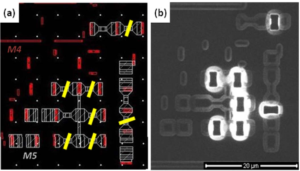Read IC PIC18F4620 Program
Read IC PIC18F4620 Program from un-protective Microcontroller memory, the content will be copied to blank MCU which will provide the same functions as original MCU cloning units;

Read IC PIC18F4620 Program from un-protective Microcontroller memory, the content will be copied to blank MCU which will provide the same functions as original MCU cloning units
For timing insensitive applications, the “RC” and “RCIO” device options offer additional cost savings when Read IC.
The actual oscillator frequency is a function of several factors:
· supply voltage
· values of the external resistor (REXT)
Given the same device, operating voltage and temperature and component values, there will also be unit-to-unit frequency variations. These are due to factors such as:
· normal manufacturing variation
· difference in lead frame capacitance between package types (especially for low CEXT values)
· variations within the tolerance of limits of REXT and CEXT
In the RC Oscillator mode, the oscillator frequency divided by 4 is available on the OSC2 pin. This signal may be used for test purposes or to synchronize other logic. Figure 2-5 shows how the R/C combination is connected.
A Phase Locked Loop (PLL) circuit is provided as an option for users who wish to use a lower frequency oscillator circuit or to clock the device up to its highest rated frequency from a crystal oscillator. This may be useful for customers who are concerned with EMI due to high-frequency crystals or users who require higher clock speeds from an internal oscillator.
The HSPLL mode makes use of the HS Oscillator mode for frequencies up to 10 MHz. A PLL then multiplies the oscillator output frequency by 4 to produce an internal clock frequency up to 40 MHz when recovering MCU data. The PLLEN bit is not available in this oscillator mode.
The PLL is only available to the crystal oscillator when the FOSC3:FOSC0 Configuration bits are programmed for HSPLL mode (= 0110).
The PIC18F4620 devices include an internal oscillator block which generates two different clock signals; either can be used as the microcontroller’s clock source. This may eliminate the need for external oscillator circuits on the OSC1 and/or OSC2 pins.
The main output (INTOSC) is an 8 MHz clock source, which can be used to directly drive the device clock. It also drives a postscaler, which can provide a range of clock frequencies from 31 kHz to 4 MHz. The INTOSC output is enabled when a clock frequency from 125 kHz to 8 MHz is selected.
The internal oscillator block is calibrated at the factory to produce an INTOSC output frequency of 8.0 MHz. The INTRC oscillator operates independently of the INTOSC source. Any changes in INTOSC across voltage and temperature are not necessarily reflected by changes in INTRC and vice versa.
The internal oscillator’s output has been calibrated at the factory but can be adjusted in the user’s application. This is done by writing to the OSCTUNE register. The tuning sensitivity is constant throughout the tuning range.
Tags: read ic encrypted archive,read ic encrypted code,read ic encrypted content,read ic encrypted data,read ic encrypted eeprom,read ic encrypted file,read ic encrypted firmware,read ic encrypted information,read ic encrypted memory,read ic encrypted program

